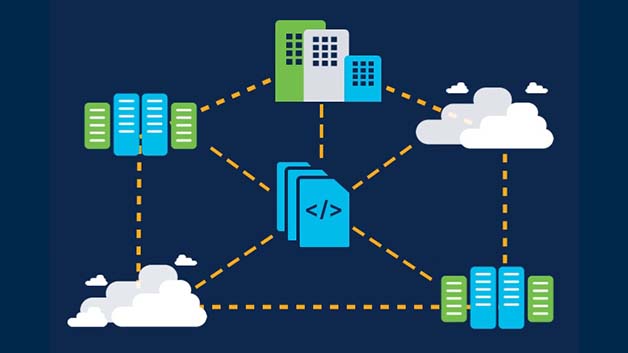Key Q&A
What business challenges drive IaC adoption?
Key drivers of IaC adoption include the following:
- Modern applications need to be updated often, requiring infrastructure to repeatedly be reconfigured. This can become hard to maintain over time, ultimately slowing down innovation and increasing the risk due to manual, error-prone processes.
- Expansion of application landscape. As many enterprises embark on digital transformation, they realize that applications need to reside in multiple locations, within and beyond the company firewall. Without a platform-agnostic approach to infrastructure management, the complexity is beyond human scale.
How can IaC meet these challenges?
IaC offers a way to unify previously separate processes and automate infrastructure provisioning. This makes the process simpler, faster, and more reliable when aligning infrastructure requirements and application deployment.
With IaC, IT resources across data centers, edge locations, and public clouds are configured through a simple file that contains code, instructing software to carry out the tasks necessary to provision infrastructure on any location.
The configuration file can be shared across multiple teams—such as infrastructure and development teams—to collaborate and help to unify previously disparate processes. The result is that both infrastructure and applications are deployed together.
In addition, IaC configuration tools act as a single source of truth throughout the application development process. This allows straightforward version control and eliminates the need for unnecessary documentation.
Sandbox environments can be easily set up by developers, and all teams can perform tests using exact replicas of the production environment with a few clicks.
How does IaC work?
IaC configuration files are read by software that uses the file's instructions to define and configure infrastructure.
IaC has popularized the concept of immutable infrastructure. In other words, rather than continuously updating and modifying existing infrastructure, the infrastructure is not reconfigured or updated every time there is a change in the application. Instead, it is replaced with a new one, built from a common image with the necessary changes in place.
IaC configuration files are usually written in repeatable code configuration and compiled and stored in central repositories. The files can be stored either locally or in public platforms such as GitHub, where members of IT operations and application development teams can access them.
This repeatable framework also opens up the possibility for further process automation, which can allow enterprises to see significant improvements in speed, efficiency, and cost savings.
